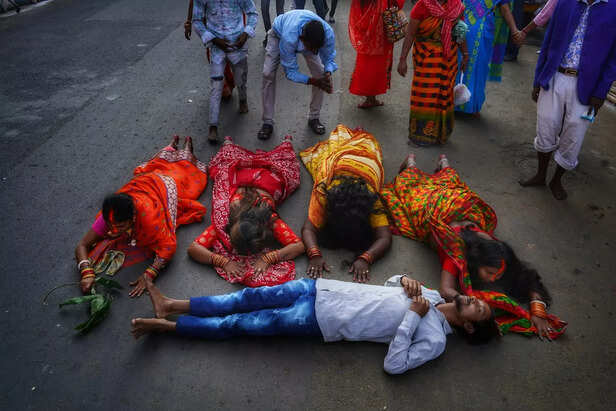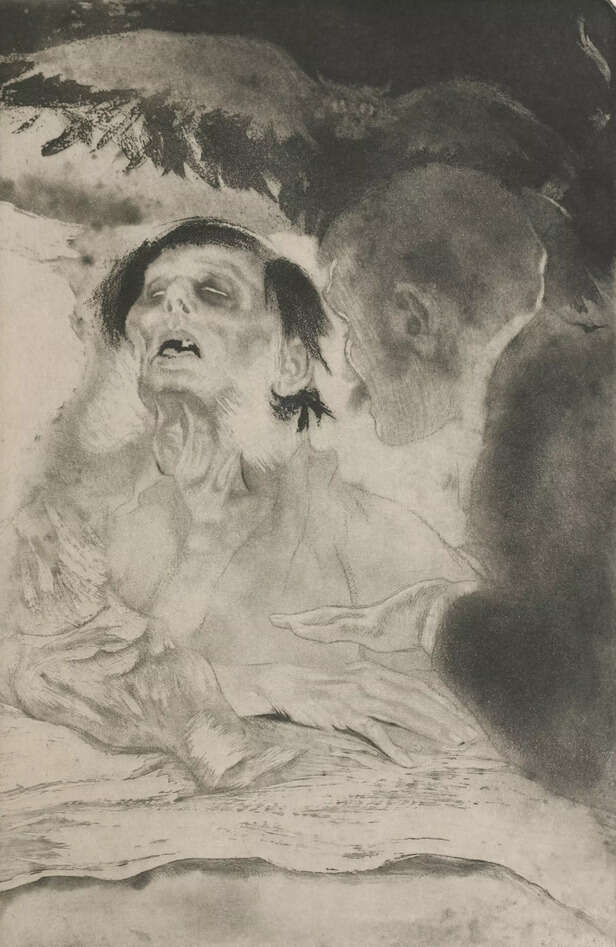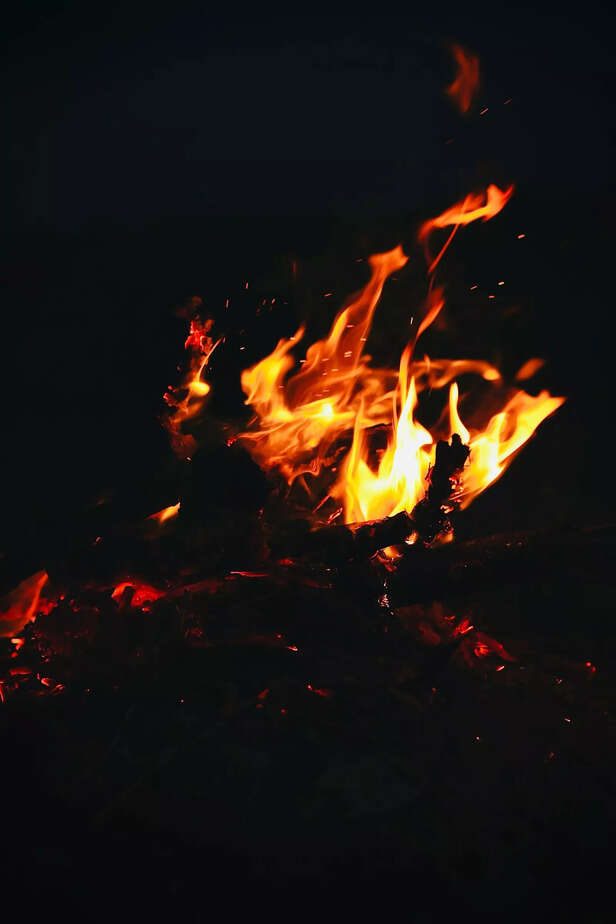Chitra Gupta or Memories? Understanding What Happens After 7 Minutes of Death!
Ankita Rai | Mon, 26 May 2025
What really happens in the first seven minutes after death? Scientific research reveals that brain activity may continue briefly, potentially triggering a final surge of memories. Hindu philosophy, meanwhile, describes the soul’s gradual departure and karmic judgment overseen by Chitra Gupta. Though science and spirituality use different frameworks, both suggest that death isn't as instant as it seems. Their views offer meaningful insights into how actions might carry weight beyond physical life. The takeaway is clear: live with awareness, as the impact of one’s life may extend far beyond the final breath.
( Image credit : Pexels )
Photo:
Think about this: your breath has ceased, the heart has stopped beating, and the body no longer responds. Clinically, this is called death. But is that truly the end? Both contemporary science and ancient Hindu spirituality suggest otherwise. While science observes the brain's final moments of activity, Hindu culture speaks of a profound spiritual transition. During the initial minutes after death often referred to as the "seven-minute window" the body may have stopped functioning, but some form of movement continues. Whether it is the neurons firing their last signals or the soul embarking on its journey, the moments immediately following death have attracted increasing interest, bridging medical facts and metaphysical meanings. This piece explores both perspectives with care, respect, and an open mind.
The Brain's Last Messages: A Scientific Perspective

Recent studies indicate that the human brain does not shut down instantly after death. Instead, certain types of brain activity may persist for a short time possibly several minutes after the heart stops beating. In a 2023 study, researchers observed increased gamma wave activity in patients shortly after cardiac arrest. Gamma waves are associated with conscious processing, memory recall, and perception. This has led some scientists to speculate that the phenomenon of "life flashing before your eyes" might have a neurological basis.
Is this last burst of brain activity the mind sorting through a lifetime of memories? Or is it merely the result of oxygen deprivation and chemical reactions? Answers remain inconclusive. Scientists caution that while these signals are intriguing, they do not conclusively demonstrate consciousness or awareness as traditionally understood. However, they suggest that the boundary between life and death may be more gradual than previously believed.
The Soul's Journey: A Hindu Perspective

In Hindu philosophy, death is viewed not as an abrupt end but as a process of transition. The soul, or atman, is considered eternal. Death is understood as the departure of the subtle body (sukshma sharira) from the physical body. This departure is not immediate. For minutes, sometimes hours or even longer, the soul remains near the body, slowly detaching. During this phase, spiritual teachings explain, one's karma begins to unfold. In some interpretations, the soul undergoes a form of life review an idea that interestingly parallels certain scientific observations. Here, Chitra Gupta becomes significant. In Hindu mythology, he is the divine scribe of death, tasked with recording every thought, deed, and intention. At death, the soul is presented with this record, and its next journey whether rebirth or liberation—is decided according to accumulated karma. Rituals performed after death, such as antyeshti (final rites) and shraddha, aim to assist the soul in its peaceful passage and spiritual guidance during this transitional period.
Are These Views Really So Different?

At first glance, science and spirituality may seem to conflict. Yet, both ask similar questions—though expressed in different languages. Both recognize that something persists briefly after the body ceases to function. Science speaks of neural activity and cognitive residues; Hinduism speaks of subtle energies and karmic processes. Is the brain’s final activity just a chemical echo, or could it be a glimpse of something greater? Science has yet to prove the soul’s existence, but it increasingly accepts that death is not simply an on/off event. Similarly, Hindu thought does not ignore the physical body. The body and mind are considered essential stages of the soul’s evolution, with each layer gradually shed during death. Perhaps the question is less about which view is correct and more about whether both perspectives can coexist—as different lenses to understand a deeply personal, mysterious, and universal experience.
Why It Matters While We Are Still Alive

Reflecting on what happens after death is not just about what follows. It’s about how we live now. If even a fraction of our intentions, actions, and thoughts endure whether as neurological traces or karmic imprints—then our choices carry profound weight. Science and spirituality seem to agree: our lives leave lasting footprints. Whether through neurons firing or karma unfolding, the essence of who we are does not end instantly. This understanding calls not for fear or superstition but for responsibility, mindfulness, and compassion. What do we take with us? What do we leave behind? What closure do we offer, and what burdens remain unresolved?
In Conclusion: A Time for Reflection, Not Debate

The seven minutes after death remain a frontier of mystery. Science investigates with experiments and data; Hinduism contemplates with centuries of philosophy and ritual. Neither view necessarily invalidates the other. Instead, each offers a unique attempt—one intellectual, the other spiritual to make sense of an experience that everyone must face. Whether it is Chitra Gupta reviewing our deeds or the brain running its final processes, the underlying message may be the same: live consciously, love fully, and meet the unknown not with fear, but with grace.
Unlock insightful tips and inspiration on personal growth, productivity, and well-being. Stay motivated and updated with the latest at My Life XP.
The Brain's Last Messages: A Scientific Perspective

What happens after death?
( Image credit : Pexels )
Recent studies indicate that the human brain does not shut down instantly after death. Instead, certain types of brain activity may persist for a short time possibly several minutes after the heart stops beating. In a 2023 study, researchers observed increased gamma wave activity in patients shortly after cardiac arrest. Gamma waves are associated with conscious processing, memory recall, and perception. This has led some scientists to speculate that the phenomenon of "life flashing before your eyes" might have a neurological basis.
Is this last burst of brain activity the mind sorting through a lifetime of memories? Or is it merely the result of oxygen deprivation and chemical reactions? Answers remain inconclusive. Scientists caution that while these signals are intriguing, they do not conclusively demonstrate consciousness or awareness as traditionally understood. However, they suggest that the boundary between life and death may be more gradual than previously believed.
The Soul's Journey: A Hindu Perspective

the soul leaves the body for a new journey
( Image credit : Pexels )
In Hindu philosophy, death is viewed not as an abrupt end but as a process of transition. The soul, or atman, is considered eternal. Death is understood as the departure of the subtle body (sukshma sharira) from the physical body. This departure is not immediate. For minutes, sometimes hours or even longer, the soul remains near the body, slowly detaching. During this phase, spiritual teachings explain, one's karma begins to unfold. In some interpretations, the soul undergoes a form of life review an idea that interestingly parallels certain scientific observations. Here, Chitra Gupta becomes significant. In Hindu mythology, he is the divine scribe of death, tasked with recording every thought, deed, and intention. At death, the soul is presented with this record, and its next journey whether rebirth or liberation—is decided according to accumulated karma. Rituals performed after death, such as antyeshti (final rites) and shraddha, aim to assist the soul in its peaceful passage and spiritual guidance during this transitional period.
Are These Views Really So Different?

burning pyre
( Image credit : Pexels )
At first glance, science and spirituality may seem to conflict. Yet, both ask similar questions—though expressed in different languages. Both recognize that something persists briefly after the body ceases to function. Science speaks of neural activity and cognitive residues; Hinduism speaks of subtle energies and karmic processes. Is the brain’s final activity just a chemical echo, or could it be a glimpse of something greater? Science has yet to prove the soul’s existence, but it increasingly accepts that death is not simply an on/off event. Similarly, Hindu thought does not ignore the physical body. The body and mind are considered essential stages of the soul’s evolution, with each layer gradually shed during death. Perhaps the question is less about which view is correct and more about whether both perspectives can coexist—as different lenses to understand a deeply personal, mysterious, and universal experience.
Why It Matters While We Are Still Alive

the last minutes after death
( Image credit : Pexels )
Reflecting on what happens after death is not just about what follows. It’s about how we live now. If even a fraction of our intentions, actions, and thoughts endure whether as neurological traces or karmic imprints—then our choices carry profound weight. Science and spirituality seem to agree: our lives leave lasting footprints. Whether through neurons firing or karma unfolding, the essence of who we are does not end instantly. This understanding calls not for fear or superstition but for responsibility, mindfulness, and compassion. What do we take with us? What do we leave behind? What closure do we offer, and what burdens remain unresolved?
In Conclusion: A Time for Reflection, Not Debate

what happens after death is still a mystery
( Image credit : Pexels )
The seven minutes after death remain a frontier of mystery. Science investigates with experiments and data; Hinduism contemplates with centuries of philosophy and ritual. Neither view necessarily invalidates the other. Instead, each offers a unique attempt—one intellectual, the other spiritual to make sense of an experience that everyone must face. Whether it is Chitra Gupta reviewing our deeds or the brain running its final processes, the underlying message may be the same: live consciously, love fully, and meet the unknown not with fear, but with grace.
Unlock insightful tips and inspiration on personal growth, productivity, and well-being. Stay motivated and updated with the latest at My Life XP.
Frequently Asked Questions ( FAQs)
- What happens in the brain during the first minutes after death?Certain brain activities, like gamma waves linked to memory and awareness, can briefly continue for several minutes after the heart stops.
- Who is Chitra Gupta in Hindu beliefs about death?Chitra Gupta is the divine scribe who records a person’s deeds and karma to guide the soul’s journey after death.
- Can science prove the existence of the soul?Science cannot confirm the soul but recognizes that death is a gradual process rather than an instant event.









